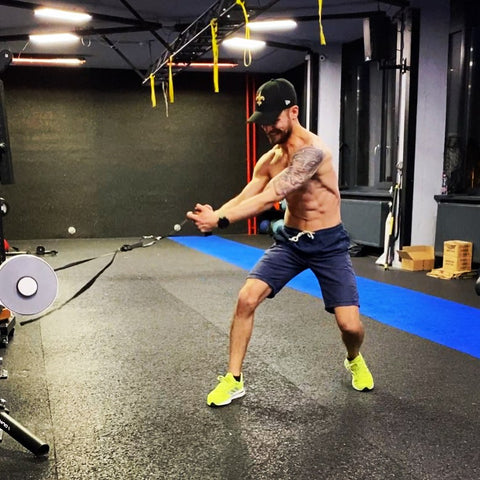Flywheel Training and Cardio: A Dynamic Duo for Physical Fitness
In the world of fitness, there is a constant quest for innovative training methods that efficiently address various aspects of physical fitness. One such method that has recently gained attention is flywheel training, especially when combined with cardio training. This combination offers a dynamic approach to achieving a balanced fitness regimen that improves strength, endurance, and overall cardiovascular health.
Explore here our portable Flywheels and Stationary Flywheels!

Understanding Flywheel Training
Flywheel training, also known as inertia or flywheel training, involves the use of a rotating flywheel to create resistance during exercise. Unlike traditional resistance training, where resistance is provided by gravity, flywheel training generates resistance through the rotational force of the flywheel.
The mechanism is relatively simple: when the user initiates movement by pulling or pushing against the flywheel, kinetic energy is stored within the wheel. When the user then slows down or reverses the movement, they must exert force to overcome the resistance generated by the rotating flywheel. This results in a full body workout that targets both concentric and eccentric muscle actions, activating muscles throughout the entire range of motion.
Benefits of Flywheel Training
Flywheel training offers several unique benefits that distinguish it from traditional resistance training:
- Variable Resistance: Unlike fixed weight machines or free weights, flywheel devices typically offer adjustable resistance levels with discs. This versatility allows users to customize their training to their fitness levels, goals, and specific workout routines. Devices like those offered by Kynett provide a range of resistance options to suit different needs.
- Eccentric Overload: The eccentric phase of muscle contraction, which occurs during the slowing down of movement, is particularly emphasized in flywheel training. This eccentric overload has been shown to stimulate muscle growth, improve strength, and enhance muscle function more effectively than training focused solely on concentric exercises.
- Functional Movement Patterns: Many flywheel exercises mimic movements occurring in daily life, making them highly relevant for everyday activities and sport-specific training. By activating multiple muscle groups simultaneously in functional movement patterns, flywheel training helps improve overall coordination, stability, and neuromuscular efficiency.
Integrating Cardio Training with Flywheel Workouts
While flywheel training primarily focuses on strength and power development, integrating it with cardio training can enhance the overall effectiveness of a workout routine. By incorporating cardio sessions or circuits into a flywheel training session, several benefits can be achieved, including:
- Improved Cardiovascular Health: Cardio workouts such as running, cycling, or rowing increase heart rate and improve cardiovascular endurance. By alternating these activities with flywheel exercises, users can enhance their aerobic capacity and overall cardiovascular health.
- Enhanced Fat Burning: Combining flywheel exercises with cardio training creates an optimal environment for fat burning and calorie expenditure. The intensity of flywheel training stimulates metabolism, while cardio workouts further enhance calorie burning, promoting weight loss and improved body composition.
- Increased Training Efficiency: Integrating cardio intervals into a flywheel workout allows for a comprehensive full-body workout in less time. By alternating between powerful flywheel exercises and cardio bursts, individuals can maximize their training efficiency and optimize results.
Example of a Flywheel Cardio Workout
Here is an example of a workout that combines flywheel training with cardio training:
- Warm-up: Start with 5-10 minutes of light cardio (e.g., jogging, cycling) to raise heart rate and prepare the body for exercise.
- Flywheel Exercises: Perform a series of flywheel exercises targeting major muscle groups, such as squats, deadlifts, chest presses, and rowing. Aim for 3-4 sets of 8-12 repetitions with moderate to heavy resistance.
- Cardio Intervals: Switch to cardio intervals, such as sprinting on a treadmill, cycling at high intensity, or rowing with maximum effort. Alternate between 30-60 seconds of high-intensity cardio and 60-90 seconds of active recovery (e.g., walking or light jogging) for 10-15 minutes.
- Cooling-down: Finish the workout with 5-10 minutes of light cardio or static stretching to lower heart rate, reduce muscle tension, and promote recovery.

Conclusion
Flywheel training offers a dynamic and versatile approach to strength and power development while integrating cardio training improves overall fitness and cardiovascular health. By combining these modalities in a well-designed workout routine, individuals can achieve a balanced approach to fitness that optimizes strength, endurance, and overall health. Whether you are an athlete looking to enhance performance or a fitness enthusiast striving for a balanced training approach, integrating flywheel training with cardio training can take your fitness journey to new heights. View all our Flywheel machines here!









